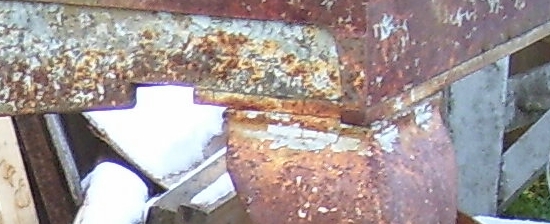Andy FitzGibbon
Diamond
- Joined
- Sep 5, 2005
- Location
- Elkins WV
Member Jim C. traded me this table for a couple things I had:

It's 2' by 5' and weighs about 1500 lbs. The underside of the top has heavy cast ribbing, similar to the way a surface plate is constructed. The slots in the top are not tee slots, just regular slots about 1/2" deep. The leg attachment is sort of odd, like maybe the legs weren't originally intended for the table, but Jim says he saw a couple more that were the same. Perhaps they all originally came out of the same factory in Buffalo.
Andy

It's 2' by 5' and weighs about 1500 lbs. The underside of the top has heavy cast ribbing, similar to the way a surface plate is constructed. The slots in the top are not tee slots, just regular slots about 1/2" deep. The leg attachment is sort of odd, like maybe the legs weren't originally intended for the table, but Jim says he saw a couple more that were the same. Perhaps they all originally came out of the same factory in Buffalo.
Andy



